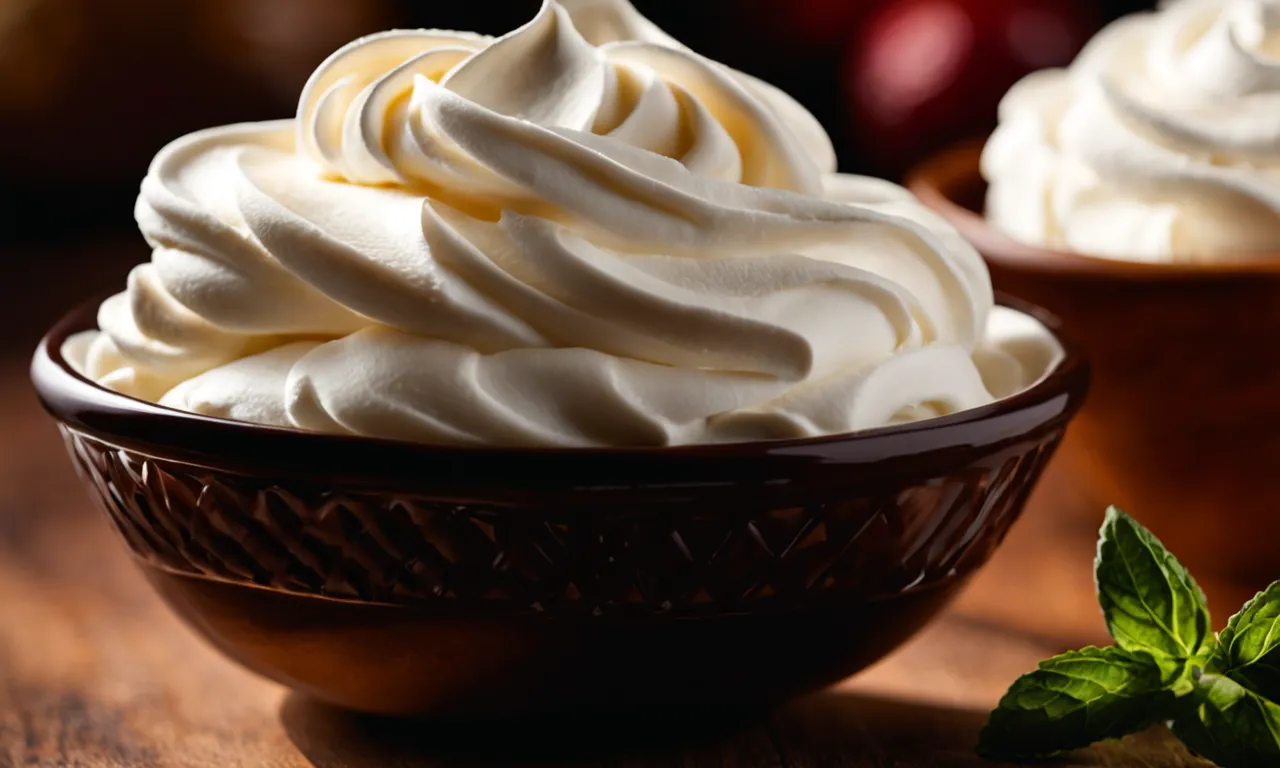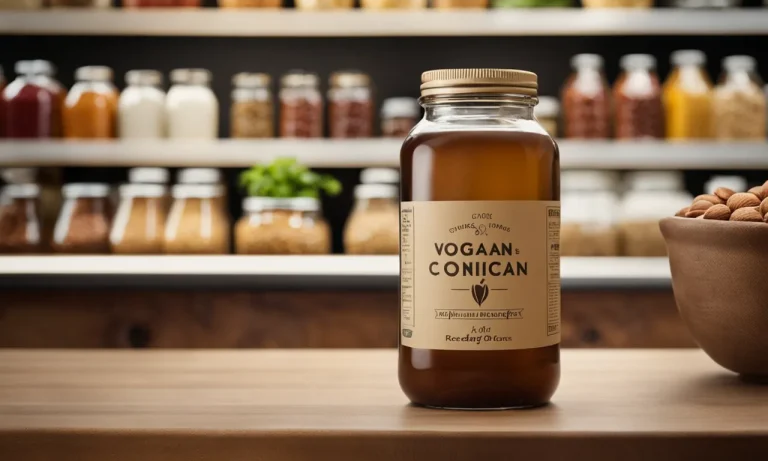Is Whipped Cream Vegetarian? Examining The Ingredients
Whipped cream is a light and fluffy dairy-based topping popular on desserts and baked goods. With its sweet taste and airy texture, it can be hard to resist! But if you follow a vegetarian diet, you may be wondering – can I eat whipped cream?
If you’re short on time, here’s a quick answer to your question: Whipped cream is generally vegetarian, but always check the ingredients since some brands contain non-vegetarian additives.
In this comprehensive guide, we’ll take a close look at how whipped cream is made, its common ingredients, and vegetarian-friendly whipping alternatives to help you determine if whipped cream has a place in your vegetarian diet.
Understanding How Whipped Cream Is Made
Whipped cream is a delicious addition to desserts, hot beverages, and even savory dishes. But have you ever wondered how it is made? Let’s take a closer look at the process and ingredients involved in creating this delightful treat.
The Whipping Process
Whipped cream gets its light and airy texture through a process called whipping. This involves incorporating air into the cream, which causes it to expand and thicken. The most common method of whipping cream is by using an electric mixer or whisk, which beats the cream at a high speed.
During the whipping process, the fat globules in the cream are agitated and start to break down. This causes the fat to partially solidify, trapping air bubbles and creating the desired fluffy texture. The longer the cream is whipped, the thicker and more stable it becomes.
The Role of Heavy Cream
The main ingredient in whipped cream is heavy cream, also known as heavy whipping cream or double cream. This rich and creamy liquid is derived from cow’s milk and contains a high percentage of milk fat. The fat content is what gives whipped cream its smooth and velvety texture.
Heavy cream typically contains at least 36% milk fat, although some varieties may have a higher fat content. It is important to note that the fat content directly affects the stability and whipping properties of the cream.
Cream with a higher fat content tends to whip up better and hold its shape for a longer period.
Adding Sweeteners and Stabilizers
While heavy cream is the main ingredient, sweeteners and stabilizers are often added to whipped cream to enhance its flavor and stability. Common sweeteners include powdered sugar or granulated sugar, which not only add sweetness but also help stabilize the whipped cream.
Stabilizers, such as gelatin or cornstarch, may be used to prevent the whipped cream from deflating or separating. These ingredients help maintain the structure and texture of the cream, allowing it to hold its shape for longer periods.
It is worth noting that there are variations in the ingredients used to make whipped cream depending on the recipe and personal preference. Some recipes may call for the addition of vanilla extract or other flavorings to further enhance the taste.
Examining the Ingredients in Whipped Cream
Whipped cream is a popular topping for desserts, drinks, and even coffee. However, for individuals following a vegetarian lifestyle, it’s important to understand the ingredients used in whipped cream to ensure it aligns with their dietary choices.
Let’s take a closer look at the common ingredients found in whipped cream.
Heavy Cream
The main ingredient in whipped cream is heavy cream, which is a high-fat dairy product. Heavy cream is obtained by skimming the fatty layer from cow’s milk, resulting in a rich and creamy texture. While heavy cream is derived from animals, it is still considered vegetarian as it does not involve the slaughter of animals.
Sugar
Sugar is another key ingredient in whipped cream, and it adds sweetness to the final product. Whether you prefer powdered sugar or granulated sugar, both options are vegetarian-friendly. Sugar is derived from sugarcane or sugar beets, which are plant sources.
Cornstarch and Other Stabilizers
To achieve the light and fluffy texture of whipped cream, stabilizers such as cornstarch are often added. Cornstarch is a plant-based ingredient derived from corn, making it suitable for vegetarians. Other stabilizers used in whipped cream may include gelatin or agar-agar, both of which are derived from plant or seaweed sources respectively.
Natural and Artificial Flavors
Whipped cream can also contain natural or artificial flavors to enhance its taste. Natural flavors are derived from plants or animals, while artificial flavors are synthetically produced. It’s important for vegetarians to check the source of the flavors used, as some natural flavors may be derived from animal sources.
However, most commercially available whipped cream products use vegetarian-friendly flavors.
Potential Animal Products to Watch Out For
Gelatin
One ingredient commonly found in whipped cream that may not be vegetarian-friendly is gelatin. Gelatin is derived from collagen, which is found in animal bones, skin, and connective tissues. It is often used as a thickening agent in food products, including some brands of whipped cream.
Gelatin helps give whipped cream a smooth and stable texture. Vegetarians should be cautious when selecting whipped cream products and check the label for any mention of gelatin.
Carrageenan
Another ingredient to watch out for in whipped cream is carrageenan. Carrageenan is a natural ingredient derived from red seaweed that is used as a stabilizer and thickening agent in many food products, including some whipped cream brands.
While carrageenan itself is plant-based, there are concerns about the processing methods used to extract it. Some vegetarians may choose to avoid carrageenan due to its potential association with animal products during processing.
It is best to check the label or contact the manufacturer to confirm if carrageenan used in the whipped cream is vegetarian-friendly.
Mono and Diglycerides
Mono and diglycerides are emulsifiers commonly used in food products, including whipped cream, to improve texture and prevent separation. These emulsifiers can be derived from both plant and animal sources.
While plant-based sources are more common, there is a possibility that mono and diglycerides derived from animal fats may be used in some whipped cream products. Vegetarians should look for whipped cream brands that specifically state that their mono and diglycerides are sourced from plant-based ingredients.
It’s important for vegetarians to be aware of these potential animal-derived ingredients in whipped cream. However, it’s worth noting that there are many brands of whipped cream available that are specifically labeled as vegetarian or vegan-friendly.
These brands use alternative ingredients to achieve the desired texture and stability without the use of animal products. Reading labels and doing a bit of research can help ensure that you find a whipped cream option that aligns with your dietary choices.
Vegetarian Substitutes for Whipped Cream
For those who follow a vegetarian diet, finding suitable substitutes for whipped cream can be a challenge. Luckily, there are several delicious options available that can be used as alternatives. Let’s explore some of these vegetarian substitutes for whipped cream:
Coconut Whipped Cream
Coconut whipped cream is a popular choice among vegetarians and vegans alike. Made from the cream of coconut milk, this dairy-free alternative offers a rich and creamy texture that is perfect for topping desserts and beverages.
To make coconut whipped cream, simply refrigerate a can of full-fat coconut milk overnight. The next day, scoop out the solidified cream, leaving behind the liquid, and whip it with a mixer until light and fluffy. Add a touch of sweetener and vanilla extract for extra flavor if desired.
Soy Whipped Topping
Soy whipped topping is another fantastic option for those looking for a vegetarian substitute. Made from soy milk, this dairy-free alternative is light, airy, and can be whipped up in a matter of minutes.
Simply chill a carton of soy milk, then pour it into a bowl and whip with an electric mixer until it reaches a fluffy consistency. Add a bit of sugar or a natural sweetener to taste, and you’ll have a delicious soy-based whipped topping that can be used in a variety of desserts.
Aquafaba Whipped Cream
Aquafaba whipped cream is a unique and inventive alternative that is gaining popularity among vegetarians and vegans. Aquafaba is the liquid found in canned chickpeas or the cooking liquid from boiling chickpeas.
This viscous liquid can be transformed into a light and fluffy whipped cream substitute by simply whisking it with a mixer. Add some sugar and vanilla extract for sweetness, and you’ll have a delectable whipped cream alternative that not only tastes amazing but also reduces food waste.
These vegetarian substitutes for whipped cream offer a range of options for those looking to enjoy a dairy-free alternative. Whether you prefer the creamy richness of coconut, the lightness of soy, or the ingenuity of aquafaba, there is a substitute out there to suit your tastes and dietary preferences.
So next time you’re craving a dollop of whipped cream, don’t hesitate to try one of these fantastic alternatives!
Conclusion
Overall, plain whipped cream without additives is generally vegetarian. But always check the ingredients label, as some brands add non-vegetarian stabilizers and thickeners.
With so many plant-based whipping options available, like coconut cream and aquafaba, vegetarians don’t have to miss out on light and fluffy whipped toppings. Simply pick your favorite dairy-free alternative and whip away!







